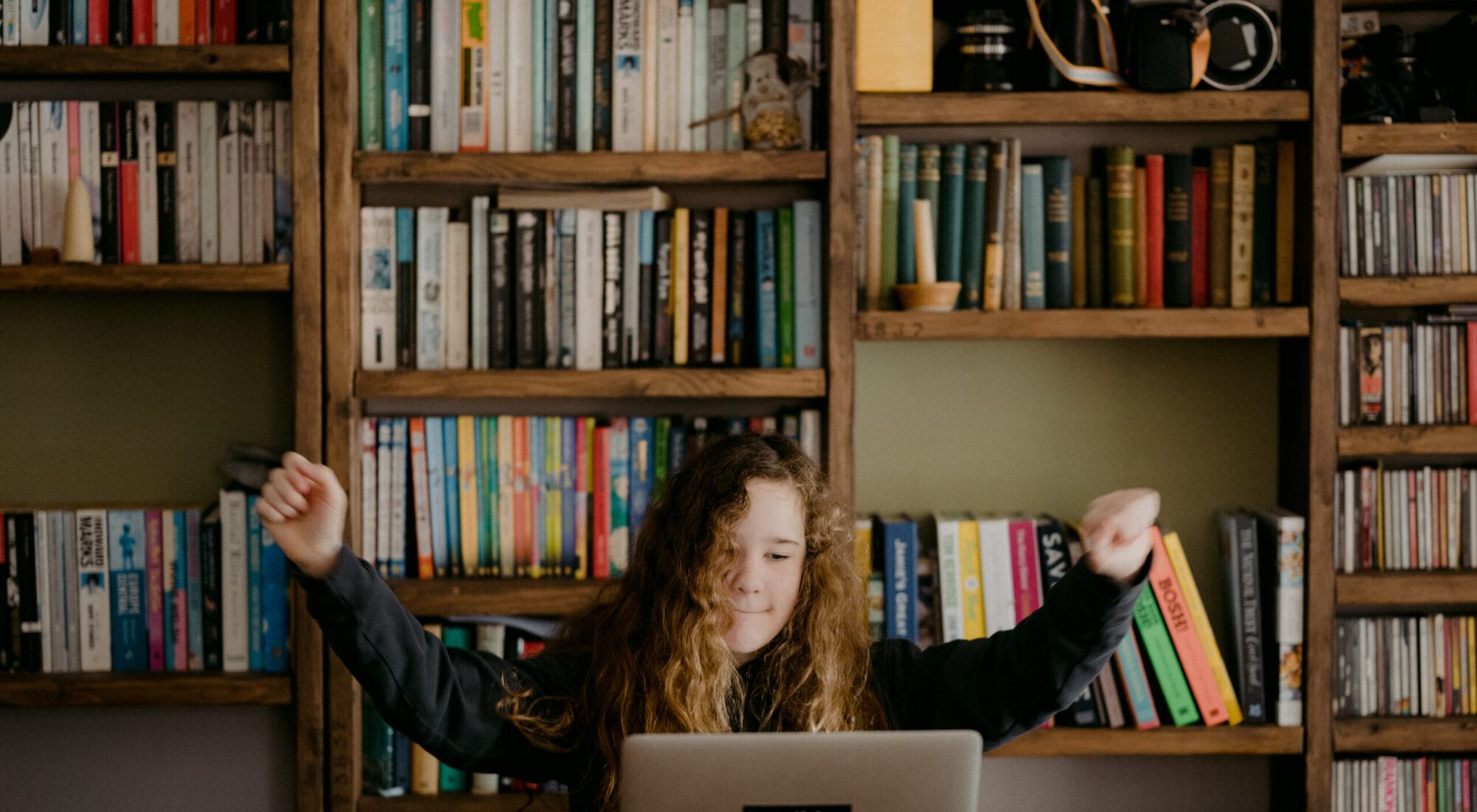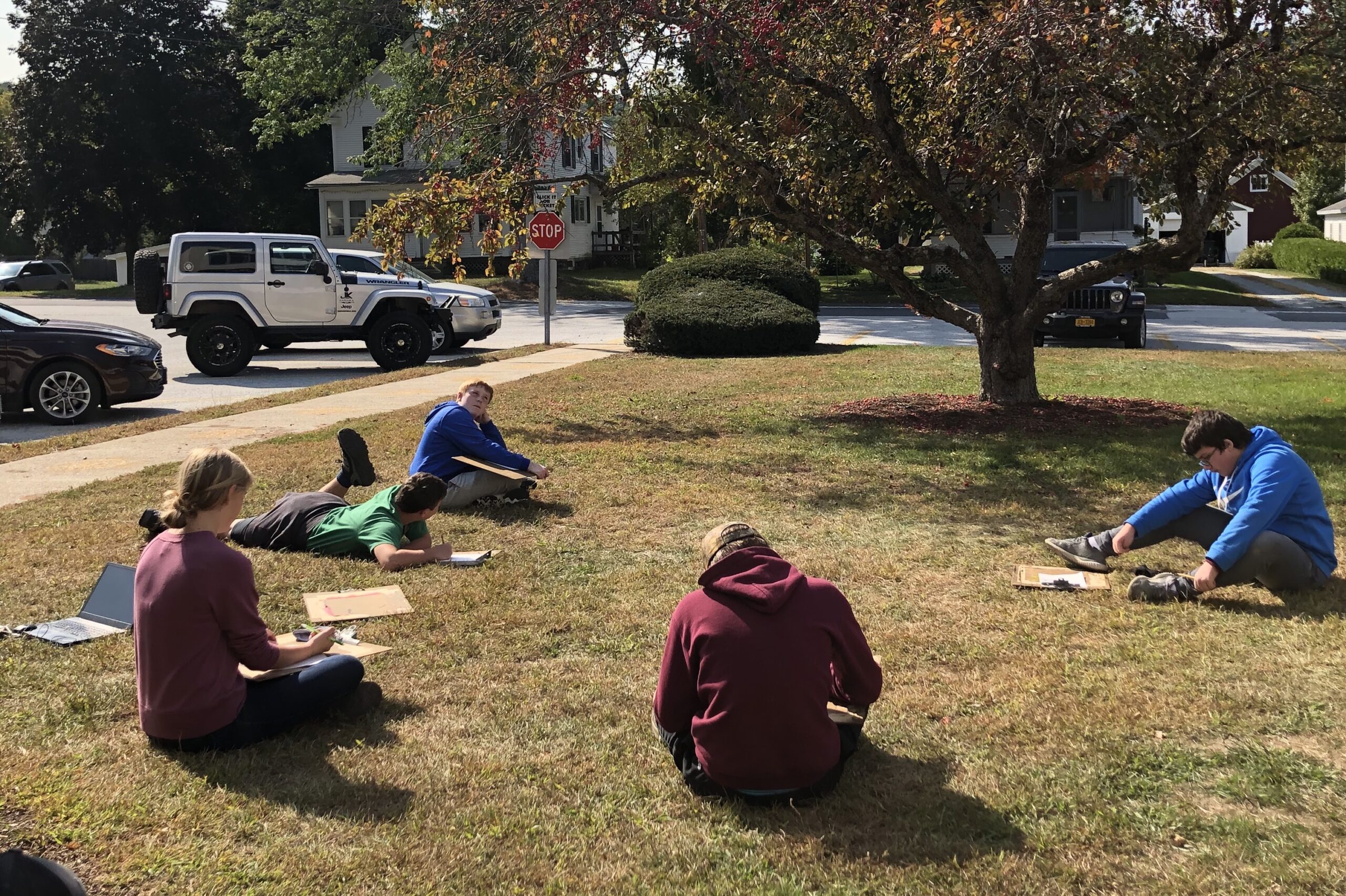Drew Kutcher, an art teacher in her first year teaching at Proctor High School has built Social-Emotional Learning (SEL) and mindfulness into her practice. She recognized early on that her 7th grade students were struggling with the transition into the high school. They could benefit with her guidance ways to find calm and stay centered in this tumultuous year.
So, she started building intentional Social Emotional Learning (SEL) mindfulness practices into her classroom routines. And the results spread.
It all started with a curious question
Drew participated in Learning Lab, a year-long networked practicum.
A key component of Learning Lab is forming a compelling inquiry question. A question that feels important to answer in collaboration with students.
From Drew:
“My inquiry question is about mental health and incorporating mental health techniques into my teaching practice. More specifically I’m focusing on how we can stay happy, calm, creative, and connected this year.
I’m feeling good about this question. This is something I care about.
We don’t incorporate enough social emotional learning techniques at the secondary level. I’m happy to see that this is changing but I want to do my part to put that at the forefront of my practice, especially this year.
Currently I’m working with my 7th grade class to try out different techniques with them. Mondays are spent practicing mindfulness deliberately for the first 10 minutes of class.”
“We have done different writing prompts, I have sent out google forms, and also asked them to make different drawings related to their emotions. The data I have collected derives from those exercises.”
What do we mean when we talk about social emotional learning?
Drew drew upon CASEL’s definition of social emotional learning to inform her work:
“Social and emotional learning (SEL) is the process through which children and adults acquire and effectively apply the knowledge, attitudes, and skills necessary to understand and manage emotions, set and achieve positive goals, feel and show empathy for others, establish and maintain positive relationships, and make responsible decisions.” –CASEL
Students at the center
“A huge bright spot for me is that as a group we have come together to support each other with any anxieties we are feeling or troubles we are having in our daily lives. One of my students runs a ‘mental check’ every day (this was her idea) where she asks questions at the beginning of class like:
- Are you feeling nervous or anxious today?
- Have you told someone you loved them today?
- Have you drank water?
- Did you eat breakfast?
This is something that happened naturally.
But now if she forgets to do it the other students are like :
“Hey what about the mental check-in?”
I think they look forward to it now which is great!
Plus, I always participate myself because I like to be open with them about my own emotions and how I process things. It’s important to model a healthy relationship with your emotions for the kids.”
From classroom practice to school-wide impact
Drew was concerned. Her social emotional focus was working. Yet it was still separate from the art projects themselves, and she wanted to tie the two together.
But as she worked on that, word spread.
Drew’s administration was eager to learn more and asked Drew to present her work at a faculty meeting recognizing teachers’ social emotional needs as well as outcomes from her own practice and results from a school-wide student survey.
Next steps to keep up the momentum
Drew shared some classroom activities to encourage other Proctor educators to continue focusing on social emotional learning:
In addition, she joined her district’s recovery team with a focus on social emotional learning:
“I am now working to implement a summer program that combines art making with a focus on mental and physical wellness that is a part of our district recovery plan. I am also on the district task force for SEL Recovery and have made several surveys that have gone out to all of the middle school students in the district as well as all of the parents in the district for data collection so that we can get feedback from our communities on what they need in terms of SEL recovery. The SEL committee which consists of myself plus a few other staff at Proctor have created SEL focused programming for the whole school, we are hoping to really ramp up our programming for next year but we are starting small this year with just Mindfulness Monday’s.”
“All of these things started with Learning Lab, I had an interest in mental wellness before but participating in Learning Lab gave me the space to fully explore this interest and bounce ideas off of other more experienced teachers and I think it has really helped me grow as a person and a teacher. I don’t think I would have taken on the leadership roles that I have if I hadn’t participated in LL.”
What can you do?
How can you incorporate SEL into your daily curriculum and lesson planning? What did other teachers in your school district do to meet the social emotional needs of their students and colleagues this year?
And more than that:
Are you interested in getting support pursuing a yearlong action research project with your practice? Interested in joining a network of like-minded educators committed to participatory action research? Now accepting applications for the 2021-2022 Learning Lab cohort.
Where can you take your teaching next?


